 Cave cricket
Cave cricket Cave cricket
Cave cricket| Falkland Islands 1984 | Indonesia 2003 | Singapore 1985 |
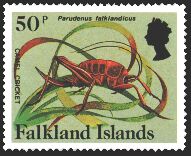 |
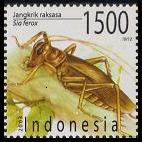 |
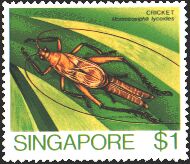 |
|---|---|---|
| Camel Cricket Parudenus falklandicus (Rhaphidophoridae) |
Cave Cricket Sia ferox (Rhaphidophoridae) |
Cricket Homoeoxipha lycoldes (Trogonidiidae) |
| Republic of Palau 1999 | NewZealand 1993 |
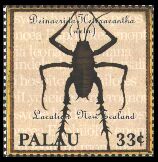 |
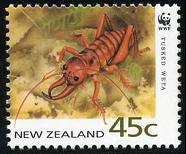 |
|---|---|
| Little Barrier Is. Giant Weta Deinacrida heteracantha (Rhaphidophoridae) |
Tusked Weta Motuweta sp.a (Rhaphidophoridae) |
Many of cave crickets have the round back, it has the form of having been the thickset, and there is no wing. Hind legs and an antenna are very long and detect existence of a surrounding situation and a foreign enemy in darkness by shaking and moving this antenna from back to a front. In the color of the body, it is brown, an eye degenerates, and, as for gray or the thing which was adapted for the cave, the body is soft. It lives by preference under the damp places in a cave etc., and a stone and the fallen tree.
The weta inhabiting the New Zealand is the very big insect, lenght of which is from 100mm to 150mm, and seems to handle much important work of what a mouse is in charge of. The weta eats a fleshy fruit, but the seed just passes the digestive organs, and it is drained. As for the seed drained an intake by a weta, the possibility that got superiority of the choice than other seeds was suggested by a seed being eaten by a weta because it had a high germination percentage. There was not the mouse in this island till the New Zealand was one of the islands that stood alone most in the world, and a person settled in 19-20 centuries. The weta is endangered by a mouse now.
 NEXT
NEXT
 to Stamp
to Stamp
 to HomePage
to HomePage